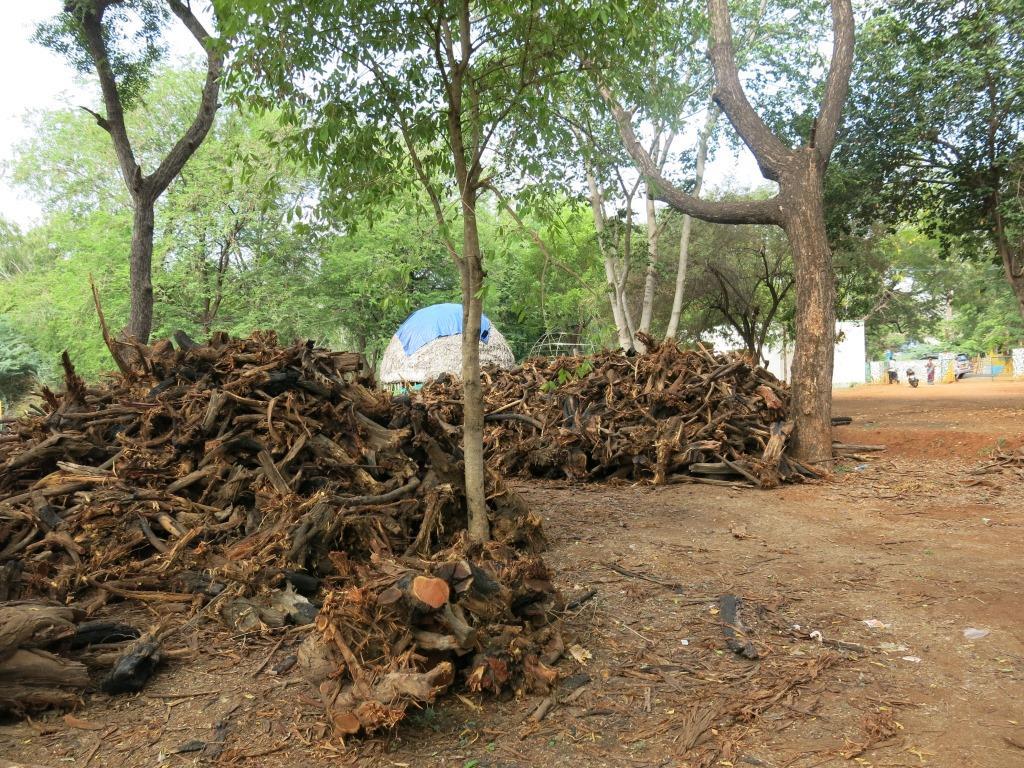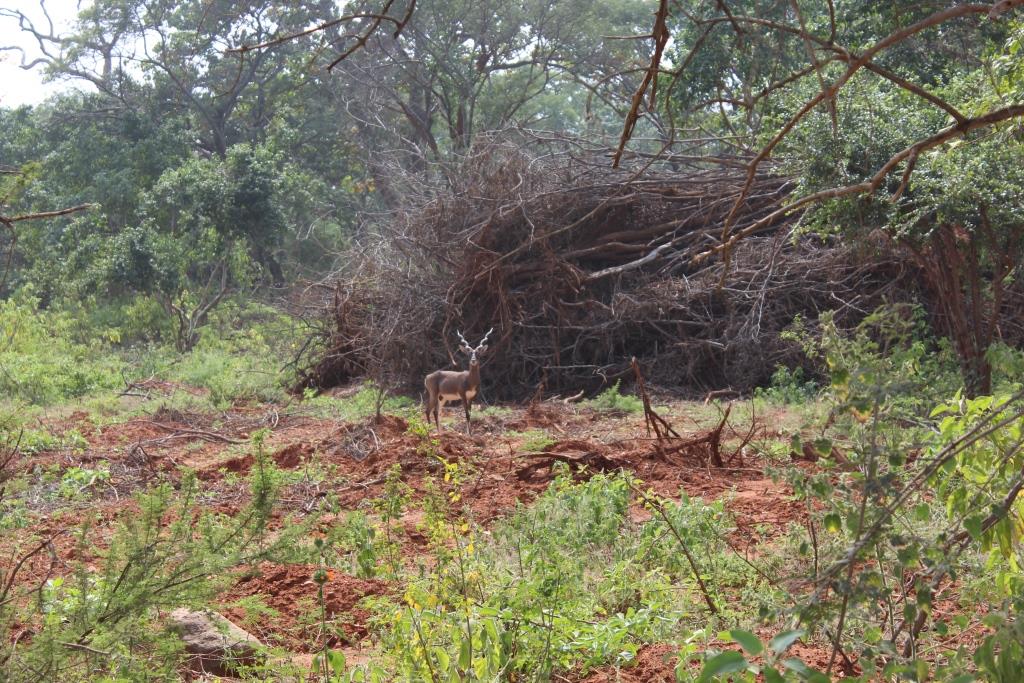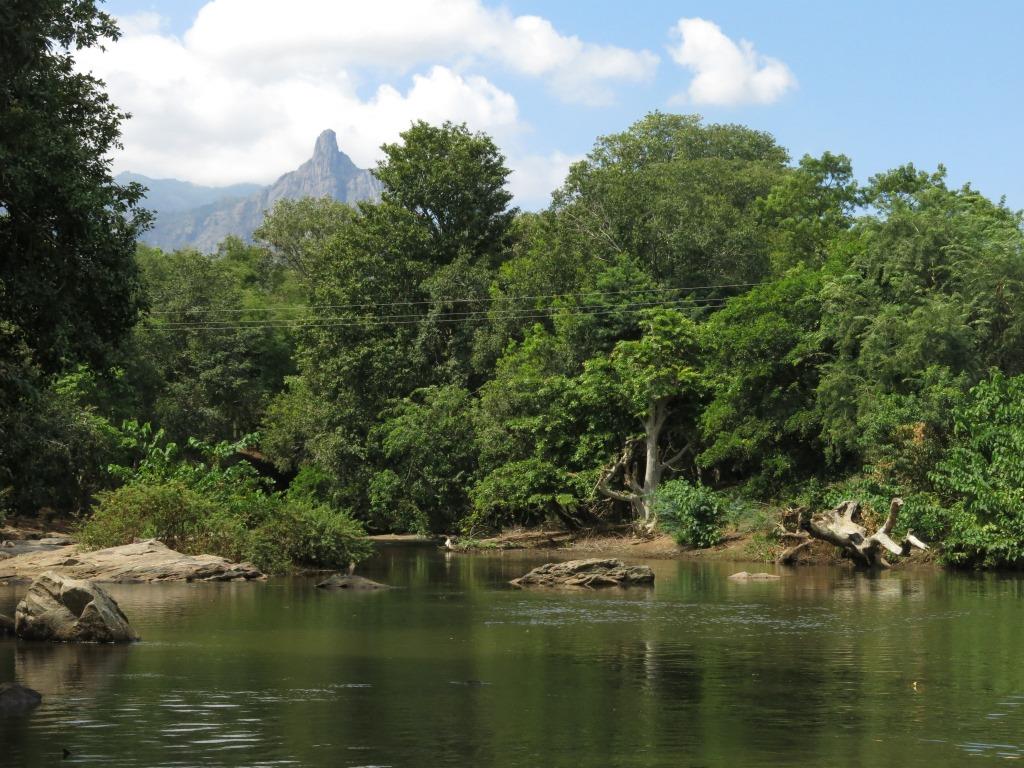The wicked problem of invasive species management in India

Prakriti Prajapati and Divya Solomon look at the issues facing invasive species management in India.
By Prakriti Prajapati and Divya Solomon

Spread of the invasive plant Prosopis juliflora in the Moyar region (Photo credit: Milind Bunyan)
Globally, climate change has been recognized as a critical threat to social and ecological systems. As climate change affects larger portions of our world, acknowledging the need to adapt to the change, and to build more resilient systems, becomes imperative. These challenges bear further complexity in developing countries such as India, which is characterised by its growing population, rapid economic growth, rampant socio-economic inequality and ecological and socio-cultural diversity.
The Western Ghats mountain range is a biodiversity hotspot. It is a complex mosaic of natural forests and agro-ecosystems under intense human use. It is also one of India’s most important and sensitive ecosystems, providing essential ecosystem services especially through hydrological regulation and carbon sequestration. Within the Western Ghats, the Nilgiri hills provides an interesting case; extreme rainfall events, temperature changes and increased spread of invasives have caused rapid changes in the landscape. Livelihoods critically dependent on water experience these alterations at a pronounced scale.

Photo credit: Lucia Scodanibbio
ATREE is conducting extensive research in the forested landscapes of Southern India, particularly in the Western and Eastern Ghats. The aim is to map the nature of extreme rainfall and hydrologic and carbon regulatory effects of forest degradation and reforestation. One emerging result from our research was the extensive spread of invasive species. Invasives are negatively impacting growth of native species as well as ground-water levels. Furthermore, our research seems to indicate that the spread of invasives has accelerated over the last decade, despite attempts from the Forest Department to manage the spread. Studies indicate invasive species have a serious impact on ecosystems. This is especially true in ecologically sensitive zones such as the Shola-grasslands in the upper Nilgiris.
Invasive species are more resilient to extreme weather events than native species. Invasive species can act as a force-multiplier by adapting rapidly to changing environments which then exacerbates the scarcity of essential resources, such as groundwater. Invasives, like Scotch broom and Cestrum absorb nutrients and water from soil at a much faster rate than native species. Apart from competition over natural resources, invasives affect rural livelihoods in a myriad of ways. Studies in drier arid regions in Africa indicate that proliferation of invasive species, such as Prosopis juliflora, can seriously affect crop yields and are toxic to livestock. Furthermore, recent research has speculated that invasives could be a contributing factor in man-animal conflict. The poisonous invasives force wild pigs and elephants from forested areas into agricultural lands in search of food.

Photo credit: Lucia Scodanibbio
Currently, invasive species management has emerged as a crucial issue in India’s forested landscapes. Two crucial barriers to the removal of invasives draw more attention than others i.e. access to relevant data and the lack of political-economic motivation. Invaluable government data on the ecology of the region is often tied up in red tape, making it inaccessible to researchers. Furthermore, dissemination of facts to the end-users, such as farmers, is practically non-existent! It is not surprising that farmers are unable to make informed decisions. The need for open access to data has been constantly highlighted during engagements with researchers and farmers. The glaring loopholes in communication between research institutes and communities in the region is obvious, with project stipulated engagement processes often being piecemeal and rarely providing end users with applicable and relevant information.
Invasive species, such as Prosopis juliflora, were initially introduced to India in the late 1800’s to combat desertification, stabilize sand dunes and provide fuel. Due to the resilience and the fast growing nature of invasive species, planting of invasives was pursued in primarily scrub and grasslands regions in the 1960s. In order to increase green cover in a short time span, the Forest Department planted Prosopis, Acacia, Eucalyptus and Wattle. Little consideration was given to the potential negative impacts of introducing alien species in fragile ecosystems. Recognising and changing a maladaptive policy is not an easy task but becomes all the more important to ensure sound scientific backing to policy options.

Photo credit: Lucia Scodanibbio
It is a well-established argument that economic reasons today undermine ecological sanity. Unless economic sensibility in invasive species management is emphasized, the long-term sustainability of these projects remains uncertain. Communities have been encouraged and supported in harvesting invasive species to be used for various purposes. Certain other organizations have adopted innovative means to use invasive species - a notable example is in the Malai Mahadeshwara landscape of the Western Ghats where ATREE has led the formation of Lantana Craft Centre. These artisans are trained to make furniture using Lantana as a substitute to Bamboo.
By shifting focus to adequate economic incentives, invasive removal programmes can foster effective adaptation. These incentives include capacity building of local communities to use, harvest and market invasives-based commercial products. In order to speak to a wide range of interests of the community and seek their effective participation, translation of pure science into the language of long-term community wellbeing and livelihoods is essential. Thus, estimation and communication of economic costs and benefits of invasive removal along with weaving economic incentives and disincentives can go a long way in informing policy and encouraging mitigative actions. The need for encasing ecological costs within economic arguments calls for interdisciplinary research. With climate change intensifying the negative impacts of invasives, mere reactionary, short-term interventions must be replaced with well-planned and scientifically backed decisions.